Fall Arrest System Malaysia: Guide for Your Workers' Safety
With over 40 years of expertise, TopScope (M) Sdn. Bhd. has been a trusted leader in Malaysia since 1984, specialising in the design, supply, and installation of fall arrest systems. In partnership with MSA Latchways, we also provide advanced fall arrest equipments, including full-body harnesses, lanyards, anchorage points, and more, all tailored to ensure maximum protection.
Read on to discover why fall arrest systems are crucial, common terms, the calculations involved, and why TopScope should be your first choice for consultation and installation.

What is a Fall Arrest System?
A fall arrest system is a safety mechanism that helps stop workers from getting serious injuries or killed if they fall from a height. It works by slowing down the fall and reducing the impact forces on the worker’s body. Fall arrest systems are used across various industries in Malaysia, including construction, oil and gas, and building maintenance. They are essential for protecting workers when performing tasks at elevated heights where there is a risk of falling.
TopScope’s Expertise: Our partnership with MSA Latchways allows us to offer comprehensive fall arrest systems for high-rise buildings, shopping malls, hospitals, and more, ensuring that each system is specifically designed to meet the needs of the project while complying with Malaysian safety standards.
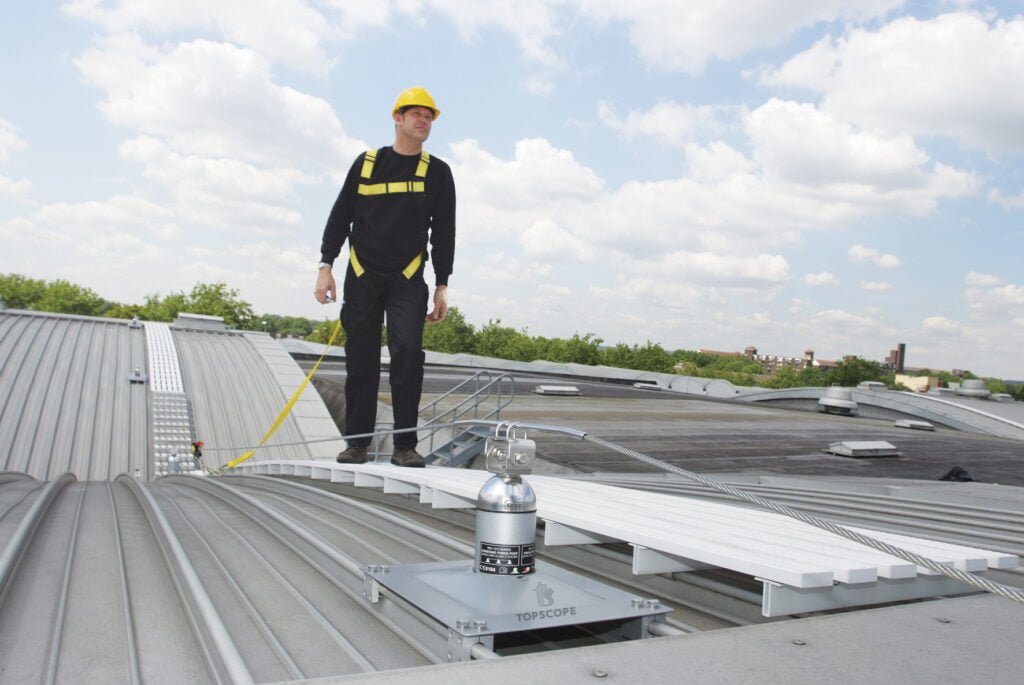
When Should You Use a Fall Arrest System?
- Fall arrest systems should be used in any situation where there is a risk of falling from a height, typically 2 meters or more.
- In Malaysia, industries involving high-rise buildings, rooftop maintenance, or hazardous working environments are required by law to implement these systems.
- Fall arrest systems are particularly critical in projects involving the construction of skyscrapers in Kuala Lumpur or maintenance on elevated structures, ensuring worker safety in compliance with Malaysian Occupational Safety and Health regulations.
What is a Fall Restraint System?
A fall restraint system is designed to prevent a fall from occurring by limiting a worker’s movement within a safe zone. Unlike fall arrest systems, which catch you if you fall, fall restraint systems keep you from getting too close to dangerous edges. These systems are often used for lower-risk tasks, and it’s possible to prevent workers from reaching the danger zones.
TopScope’s Expertise: Just like fall arrest system, our partnership with MSA Latchways allows us to provide comprehensive fall restraint systems for different tall buildings in Malaysia, ensuring that each system is specifically designed to meet the needs of the project while complying with Malaysian safety standards.
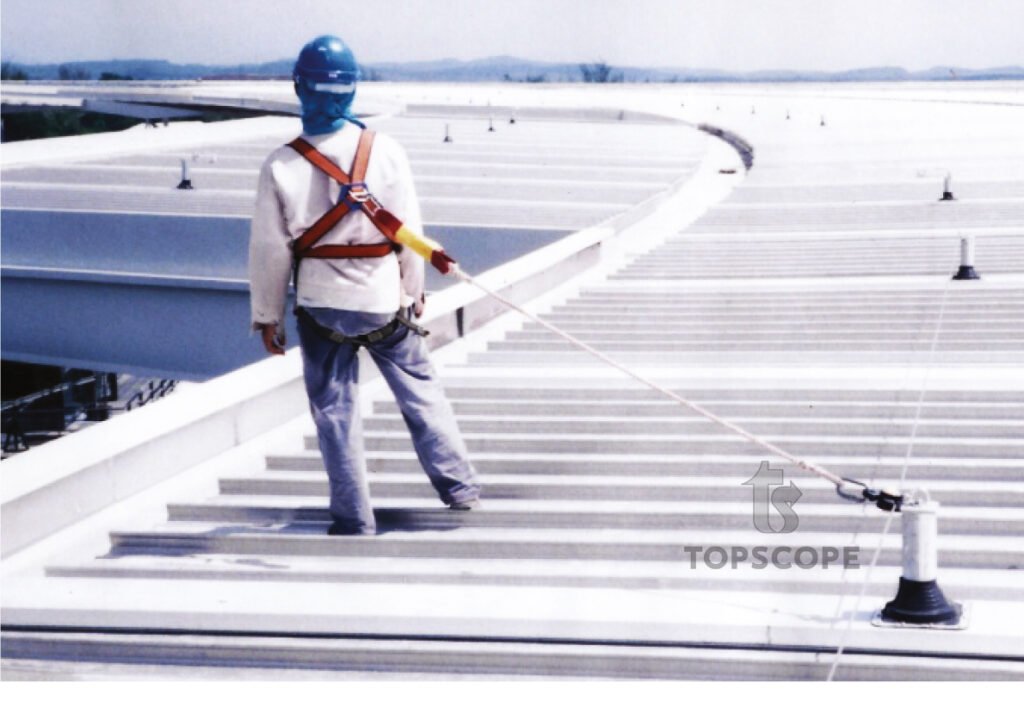
When Should You Use a Fall Restraint System?
- Fall restraint systems are ideal for scenarios where workers are working near an edge but do not need to move beyond the safety perimeter.
- For example, when performing routine maintenance on flat rooftops or inspecting façades, a fall restraint system ensures workers remain in safe zones.
- In Malaysia, TopScope tailors these systems to suit local work conditions, ensuring compliance with DOSH safety standards.
- Learn more about fall restraint vs fall arrest.
What Are Personal Fall Arrest Systems (PFAS)?
Personal Fall Arrest Systems (PFAS) are comprehensive safety solutions that consist of several key components designed to work together to stop a fall safely:
Full Body Harness
- A full-body harness is essential in distributing the forces of a fall across the body’s strongest parts.
Lanyards
- Lanyards connect the harness to the anchorage point, offering the worker a range of motion while keeping them securely tethered.
Anchorage
- Anchorage points are fixed structures or devices that securely hold the fall arrest system.
Deceleration Devices and Rope Grabs
- These devices engage during a fall to reduce speed and minimize the impact forces on the worker.
Shock Absorbers
- Shock absorbers dissipate the energy created during a fall, further reducing the risk of injury.
Safety Lifelines
- Safety lifelines connect workers to anchor points and are available in both vertical and horizontal configurations. Learn more about safety lifelines.
- Vertical Lifelines: Used when workers need to ascend or descend along a fixed path, such as when cleaning windows on tall buildings.
- Horizontal Lifelines: These lifelines allow for lateral movement across a workspace, ideal for tasks such as roof inspections with roof walkway or façade maintenance on sprawling structures.

7 Key Factors to Consider When Using a Fall Arrest System
Worker Training
Provide thorough training so workers know how to use the equipment correctly and safely.
Correct Installation
and Maintenance
Ensure the system is installed properly and regularly inspected to keep it functioning safely.
Risk Assessments
Assess the work environment to choose the right fall arrest system for the specific tasks.
Preventing Bottoming Out
Calculate fall distances accurately to ensure the system stops the fall before the worker hits the ground.
Minimizing Pendulum Effect
Position anchorage points directly above the worker to reduce dangerous swinging after a fall.
Addressing Suspension Trauma
Have a rescue plan to quickly retrieve workers after a fall, preventing prolonged suspension in the harness.
Compliance with Safety Standards
Make sure the system meets Malaysian OSHA and DOSH safety regulations to ensure proper protection.
At TopScope, we provide comprehensive support in all these areas, from designing and installing the system to regular maintenance and ensuring full compliance with Malaysian safety regulations. By considering all these factors, you can ensure that your fall arrest system effectively protects your workers at height.
How to Prevent Bottoming Out?
Bottoming out occurs when a fall arrest system fails to engage before the worker reaches the ground or another structure. To prevent this, accurate measurements and careful system design are necessary to ensure the fall arrest system activates quickly enough.
TopScope’s engineers calculate the correct fall fall height for each project, taking into account
- Total Fall Clearance Distance (TFCD)
- Free Fall Distance (FFD)
- Deceleration Distance (DD)
- Height of the Worker (H)
- Safety Factor (SFT)
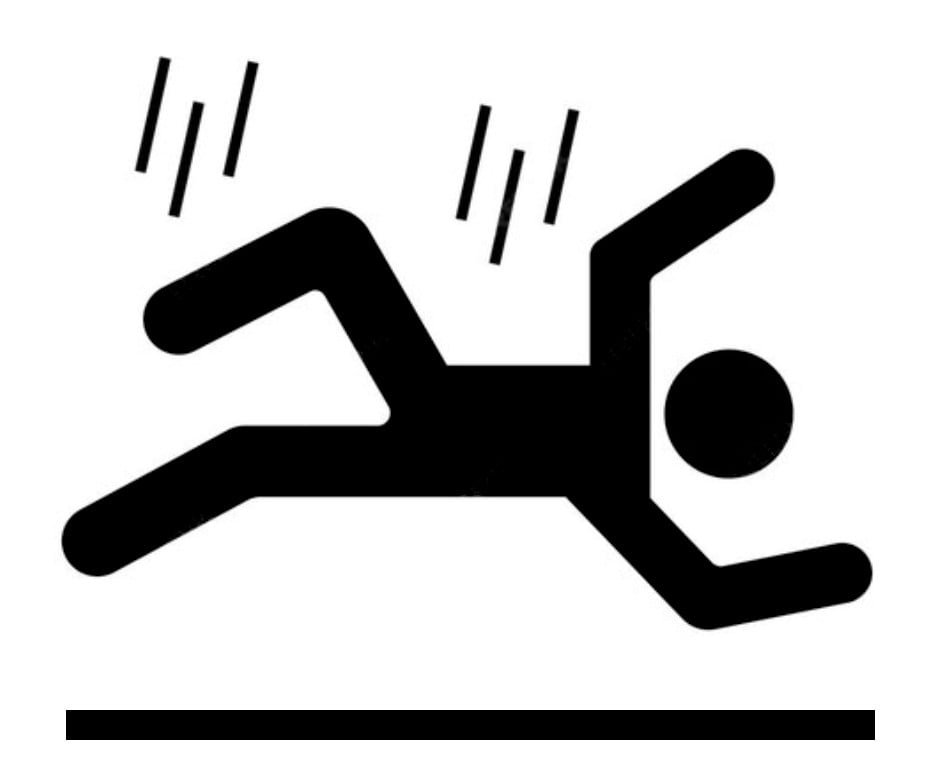
How to Calculate Fall Height?
Calculating fall height is crucial to ensure a fall arrest system works effectively. It involves determining the total distance a worker could fall before hitting a lower surface, factoring in free fall distance, deceleration, and a safety margin. Accurate calculations help prevent injuries and ensure safety compliance, especially in complex high-rise projects.
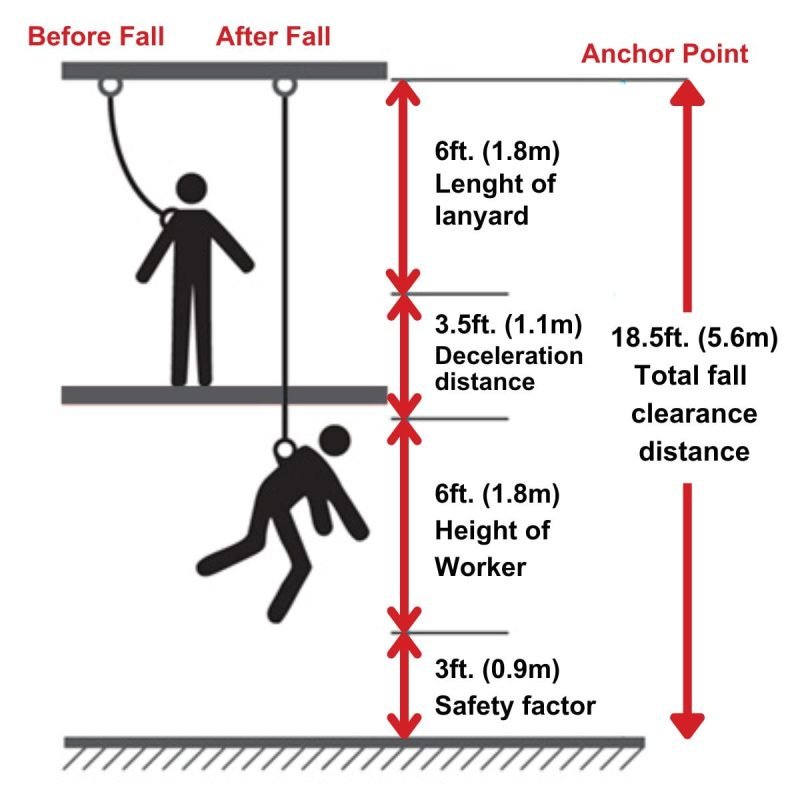
Total Fall Clearance Distance (TFCD)
This is the minimum vertical distance required between the worker’s position and the lower level or surface where they could be injured in the event of a fall. It is the total distance the worker could potentially fall before the fall arrest system fully engages, preventing them from hitting the ground or another obstacle.
In the image, the Total Fall Clearance Distance (TFCD) is shown as 18.5 feet (5.6 meters), which is calculated by adding all relevant distances:
- Length of lanyard (6 feet / 1.8 meters)
- Deceleration distance (3.5 feet / 1.1 meters)
- Height of the worker (6 feet / 1.8 meters)
- Safety factor (3 feet / 0.9 meters)
These elements together ensure that, in the event of a fall, the worker remains clear of any dangerous surface below.
Free Fall Distance (FFD)
This refers to the distance the worker falls before the fall arrest system engages to stop their descent. It’s essentially the distance from the point where the worker falls to the point where the fall protection equipment begins to arrest the fall.
In the image, the Free Fall Distance (FFD) is represented by the length of the lanyard, which is 6 feet (1.8 meters). This is the distance the worker could potentially fall before the lanyard stretches and the arrest system activates. According to safety standards, the maximum free fall distance allowed is typically 6 feet to minimize injury risks.
Deceleration Distance (DD)
The Deceleration Distance (DD) is the distance the lanyard or other equipment stretches after the fall arrest system engages. This is the phase where the system slows down the fall gradually to reduce the shock and force on the worker’s body.
In the image, the Deceleration Distance (DD) is shown as 3.5 feet (1.1 meters). This distance is critical for ensuring that the fall arrest system absorbs the energy from the fall without causing injury. The deceleration devices, such as shock absorbers, stretch to reduce the impact of the fall.
Height of the Worker (H)
This refers to the physical height of the worker involved in the fall. The worker’s height must be considered because the fall arrest system must account for the space they occupy to ensure that they do not hit the ground or any lower surface.
In the image, the Height of the Worker (H) is 6 feet (1.8 meters). This is added to the total fall clearance distance to ensure that the worker, while hanging in their harness after a fall, does not make contact with the lower level.
Safety Factor (SFT)
The Safety Factor (SFT) is an additional buffer distance added to account for variations in equipment performance, worker weight, or other unforeseen factors that could affect the total fall distance. This ensures that even in cases where the fall arrest system may stretch more than expected, the worker remains protected and does not contact the ground.
In the image, the Safety Factor (SFT) is 3 feet (0.9 meters). This extra distance acts as a margin of safety, ensuring that even in the worst-case scenario, the worker remains at a safe distance from any lower surface.
TopScope’s Expertise: You don’t need to worry about making these calculations yourself, let us handle the technical details, so you can focus on what matters. Reach out to TopScope today to safeguard your worksite with our expert fall arrest system installations.
What is Pendulum Effect and Suspension Trauma?
The Pendulum Effect occurs when a worker connected to a fall arrest system falls from a position that is not directly beneath their anchor point, causing a dangerous swinging motion. This lateral swing can lead to injuries if the worker collides with surrounding structures or obstacles during the fall. The pendulum effect is particularly hazardous in cases where multiple workers are on a shared lifeline system, as one worker’s fall can create additional movement on the line, impacting others.
Suspension Trauma, also known as orthostatic intolerance, is a medical condition that can occur when a worker is left suspended in a fall arrest harness for an extended period. Blood pools in the legs, causing reduced blood flow to the heart and brain, which can lead to fainting, shock, and, in severe cases, death if not addressed promptly.

Importance of a Rescue Plan and How to Implement It
Why a Rescue Plan is Crucial in a fall arrest situation, a worker hanging in a harness must be rescued quickly to prevent serious injuries, like suspension trauma. Malaysian safety laws, enforced by DOSH (Department of Occupational Safety and Health), require that any worksite using fall arrest systems has a rescue plan ready. This ensures workers can be safely brought down as fast as possible in an emergency.
How TopScope Implements a Rescue Plan
1. Site Assessment by TopScope: Our experts evaluate your workspace, identifying potential hazards, anchor points, and specific equipment needs to ensure an effective rescue setup.
2. Designate and Train Your Rescue Team: TopScope provides specialized training for designated rescue team members, covering essential rescue techniques, equipment handling, and emergency response tailored to your worksite.
3. TopScope-Provided Rescue Equipment: We equip your site with essential rescue tools, including:
- Rope Rescue Systems for safe lowering or raising of workers.
- Self-Retracting Lifelines (SRLs) to aid controlled descents.
- Winches or Hoists for efficient vertical movement, especially in confined spaces.
4. Regular Drills and Simulations: TopScope conducts routine rescue drills to ensure your team is ready. Our simulations cover scenarios like suspended worker retrieval and confined space rescue.
5. Documentation and Continuous Review: TopScope helps maintain detailed records of rescue plans and drills, with regular reviews to keep your rescue strategy up-to-date with the latest standards and site conditions.
With TopScope’s support, you can trust that every step is designed for safety and compliance, giving you peace of mind in any fall arrest emergency.
Why Choose TopScope for Fall Arrest System Installation?
TopScope has been a leader in fall arrest system in Malaysia since 1984s, offering:
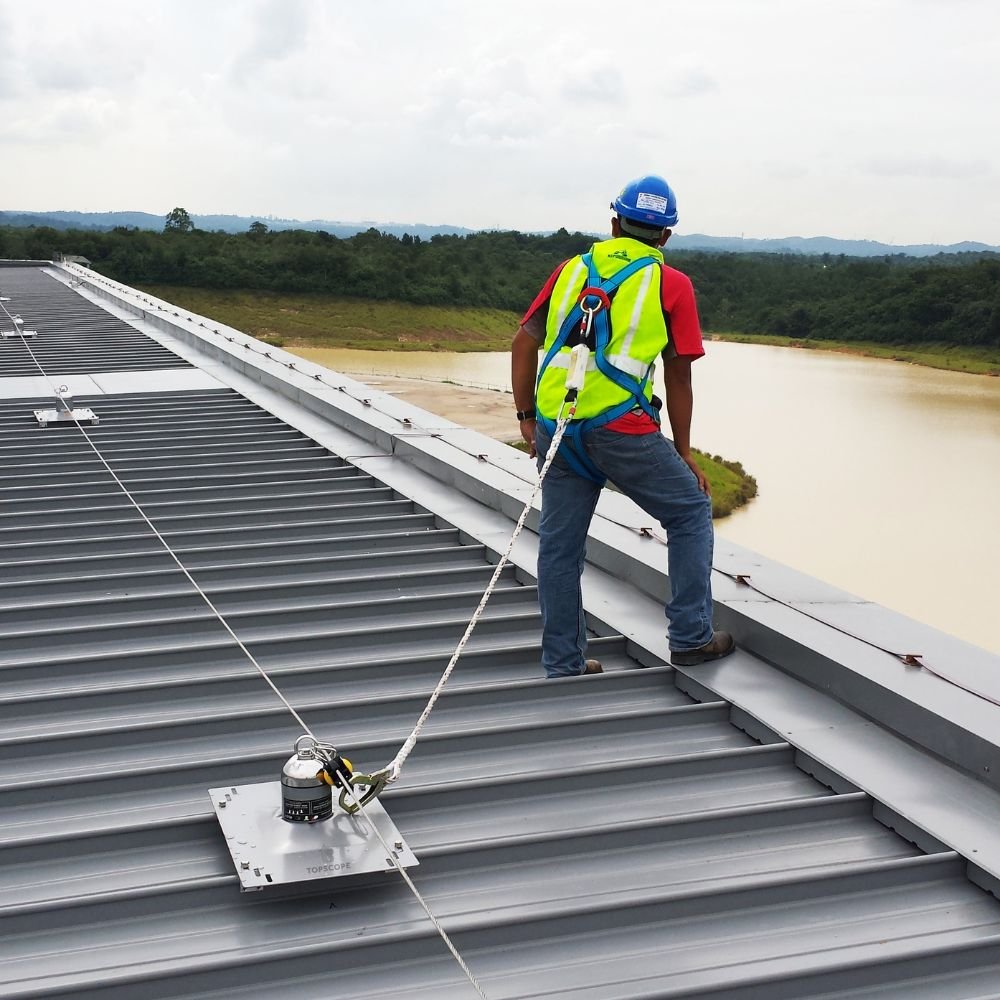
Safety & Quality
Ensuring compliance with safety standards such as DOSH and OSHA is vital for the effectiveness of fall arrest systems. At TopScope, we assist clients with the recertification or renewal process with local safety authorities (DOSH/OSHA), leveraging our expertise in equipment and safety regulations in Malaysia.
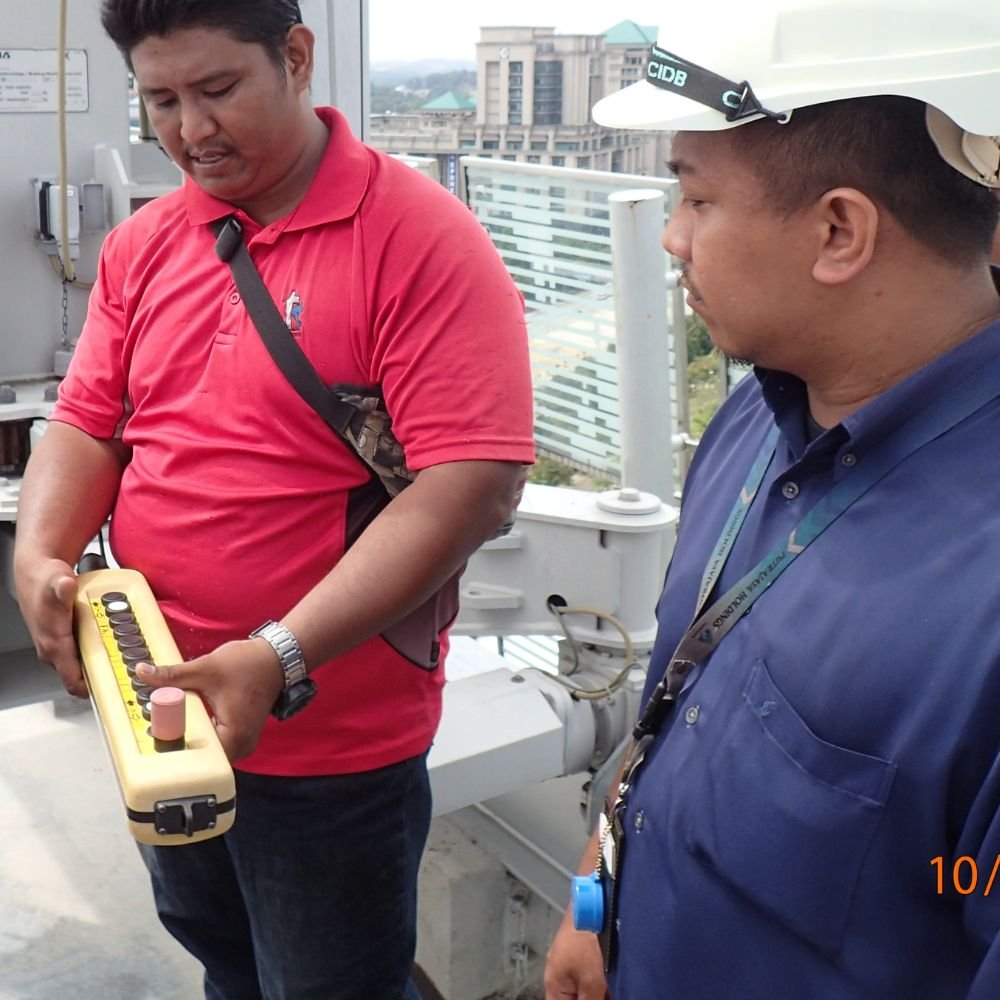
Expertise
With over 40 years of experience on landmark projects, TopScope is committed to delivering high-quality fall arrest systems. Our expertise in installation, maintenance, worker training, and comprehensive safety calculations ensures the highest level of safety for our clients.
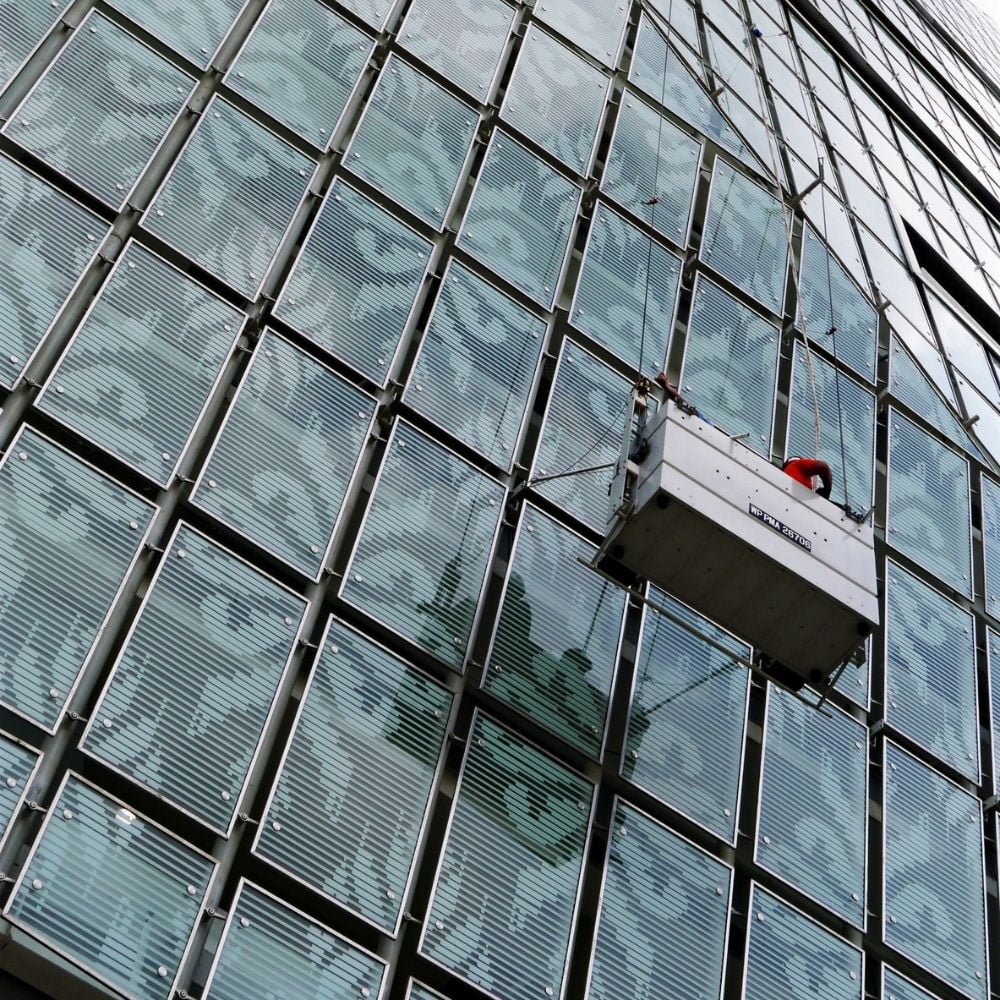
Comprehensive Solutions
From BMUs to fall arrest systems, our partnership with MSA Latchways allows us to provide Horizontal Lifelines, Vertical Lifelines, Overhead Lifelines, WinGrip Vacuum Anchors, and Personal Fall Arrest Systems (PFAS) such as SRLs, PRDs, body harnesses, lanyards, and more.
Trusted by Malaysians
Our Certifications
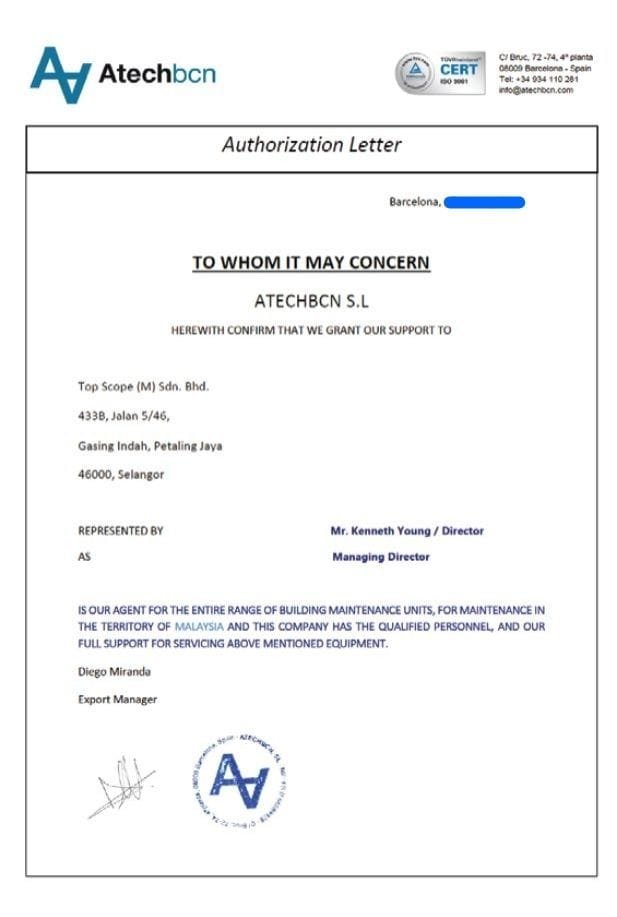
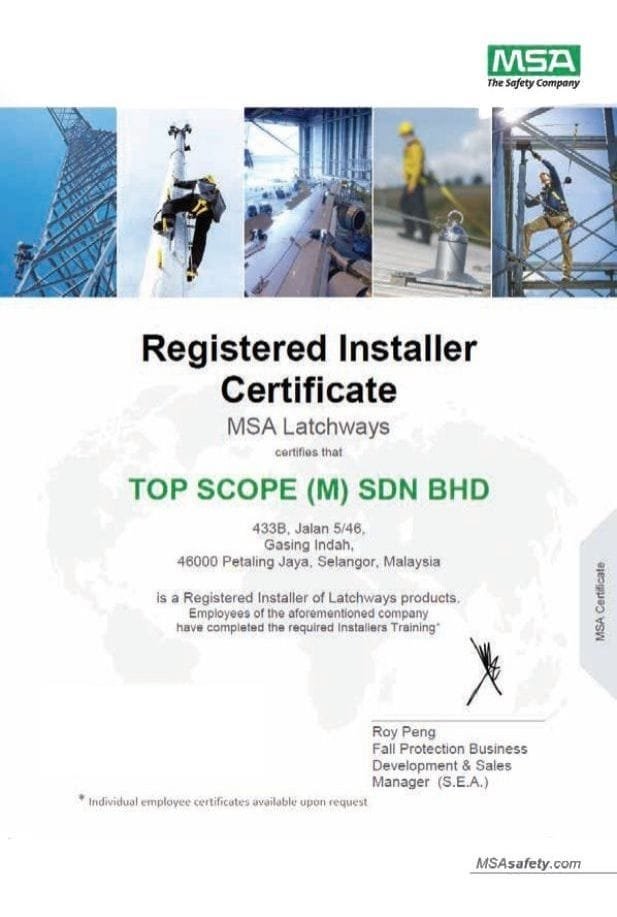
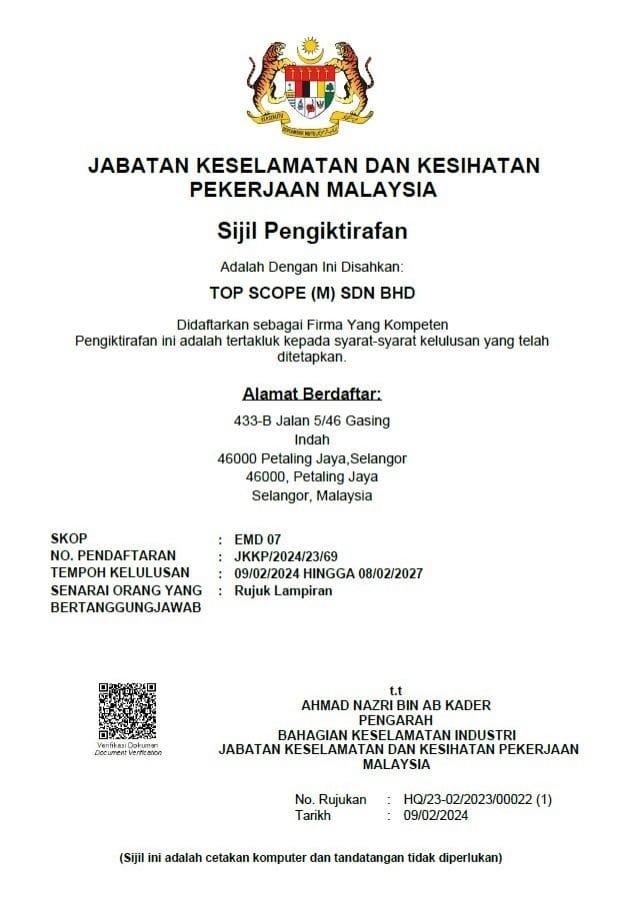
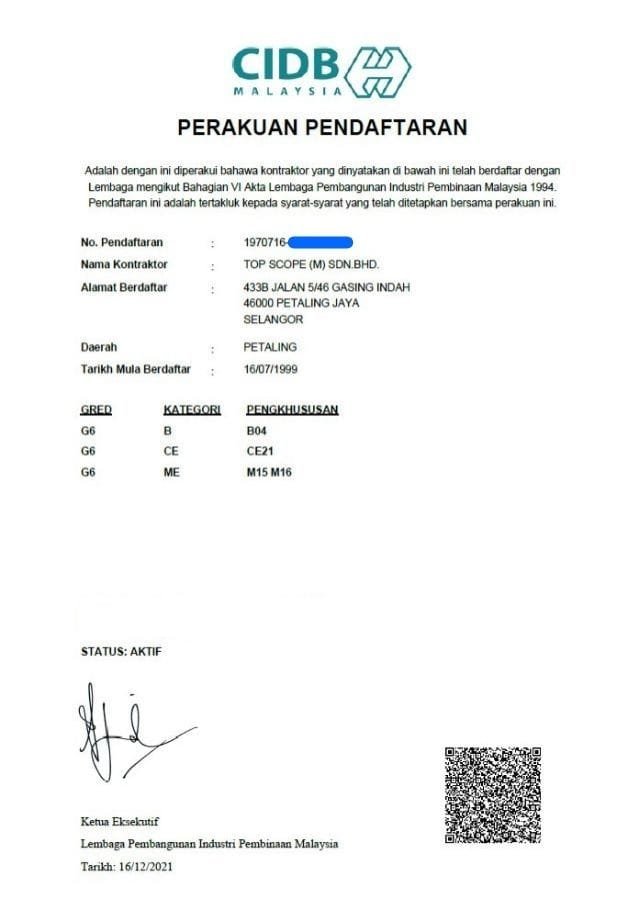
Book a Consultation
Curious About Our Services? Let’s Connect!
Why Customers Choose Us ?
- Established Expertise: Leading Malaysian facade access provider since 1984.
- Full Spectrum Services: From exterior BMUs to interior access systems.
- Safety-Centric: Certified MSA Latchways distributor, adhering to EN, BS, ISO standards.
- Prestigious Track Record: A history of servicing landmark buildings and major sectors.
- Quality Assurance: Committed to the highest safety and quality in the industry.
- Personalized Support: Ready to offer detailed, customized building maintenance solutions.
TOPSCOPE (M) SDN. BHD.
A leading company in Malaysia since 1984 for designing, supplying, installing, and servicing facade access and safety lifeline solutions.
Our Products
Contact Us
433b, Jalan 5/46, Gasing Indah,
46000, Petaling Jaya,
Selangor, Malaysia
Fax: 03-7783 6723
Phone: 03-7783 6722
Email: info@topscope-technik.com
433b, Jalan 5/46, Gasing Indah, 46000
Petaling Jaya, Selangor, Malaysia
Fax: 03-7783 6723
Phone: 03-7783 6722
Email: info@topscope-technik.com









